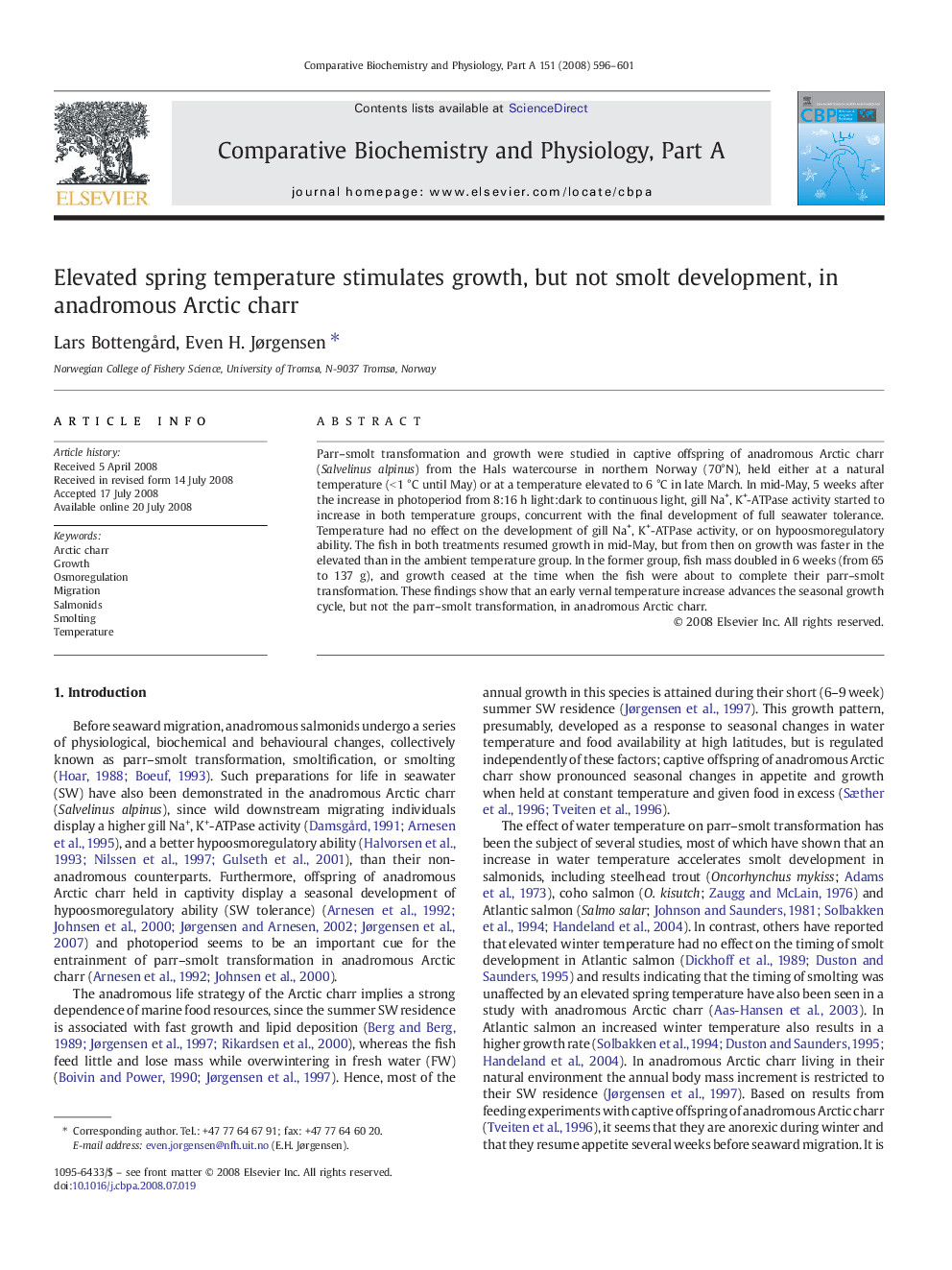| Article ID | Journal | Published Year | Pages | File Type |
|---|---|---|---|---|
| 1973393 | Comparative Biochemistry and Physiology Part A: Molecular & Integrative Physiology | 2008 | 6 Pages |
Parr–smolt transformation and growth were studied in captive offspring of anadromous Arctic charr (Salvelinus alpinus) from the Hals watercourse in northern Norway (70°N), held either at a natural temperature (< 1 °C until May) or at a temperature elevated to 6 °C in late March. In mid-May, 5 weeks after the increase in photoperiod from 8:16 h light:dark to continuous light, gill Na+, K+-ATPase activity started to increase in both temperature groups, concurrent with the final development of full seawater tolerance. Temperature had no effect on the development of gill Na+, K+-ATPase activity, or on hypoosmoregulatory ability. The fish in both treatments resumed growth in mid-May, but from then on growth was faster in the elevated than in the ambient temperature group. In the former group, fish mass doubled in 6 weeks (from 65 to 137 g), and growth ceased at the time when the fish were about to complete their parr–smolt transformation. These findings show that an early vernal temperature increase advances the seasonal growth cycle, but not the parr–smolt transformation, in anadromous Arctic charr.
